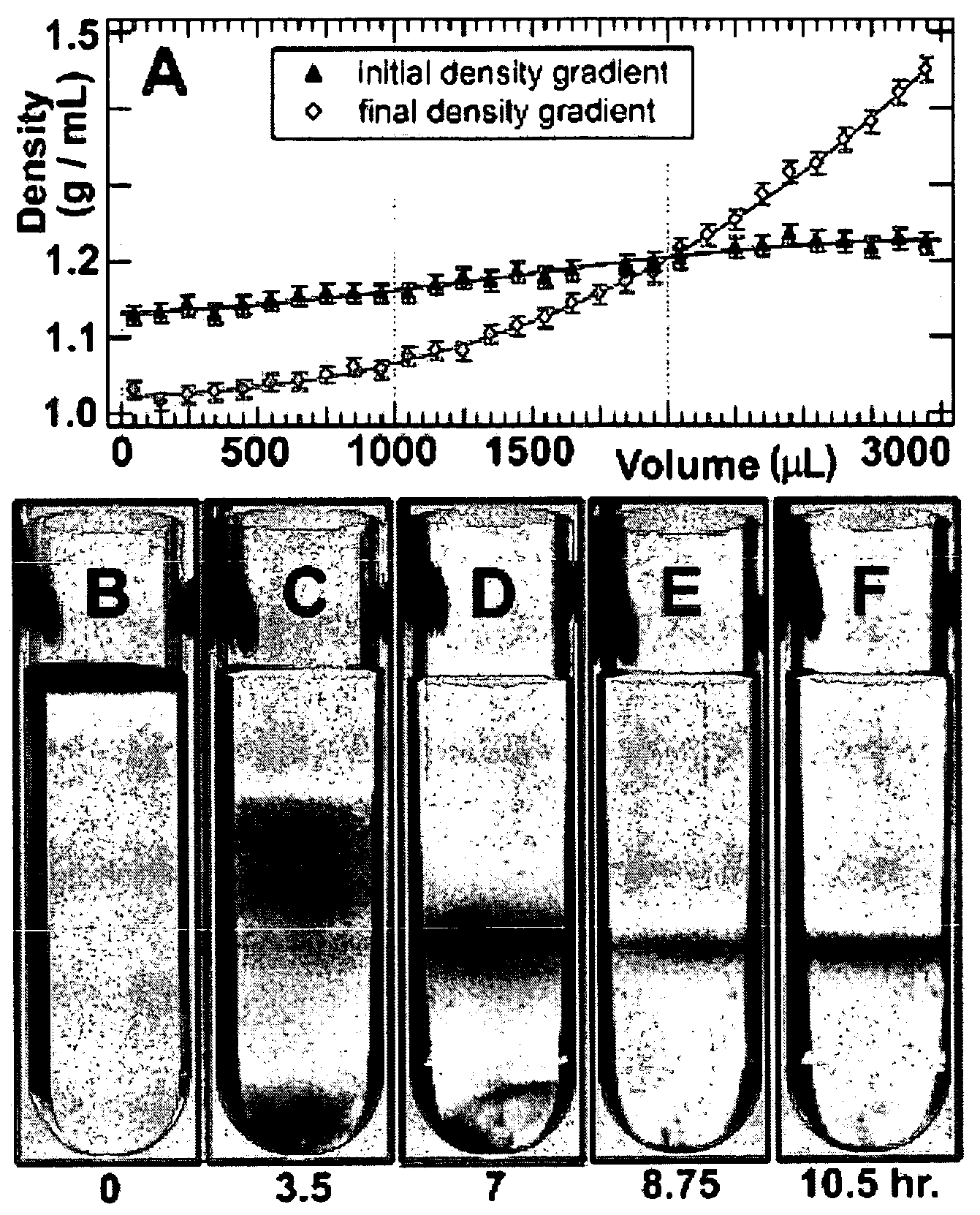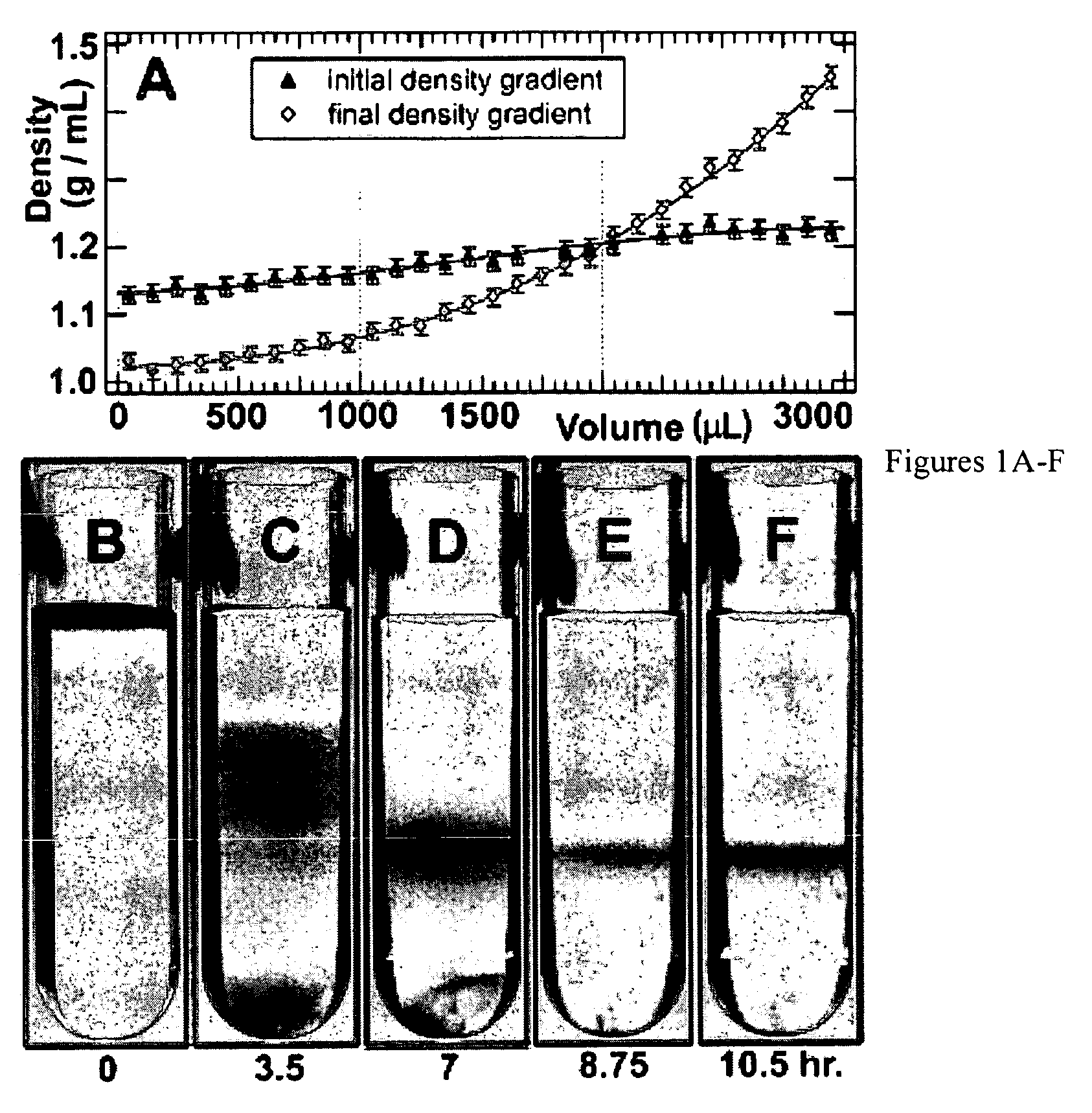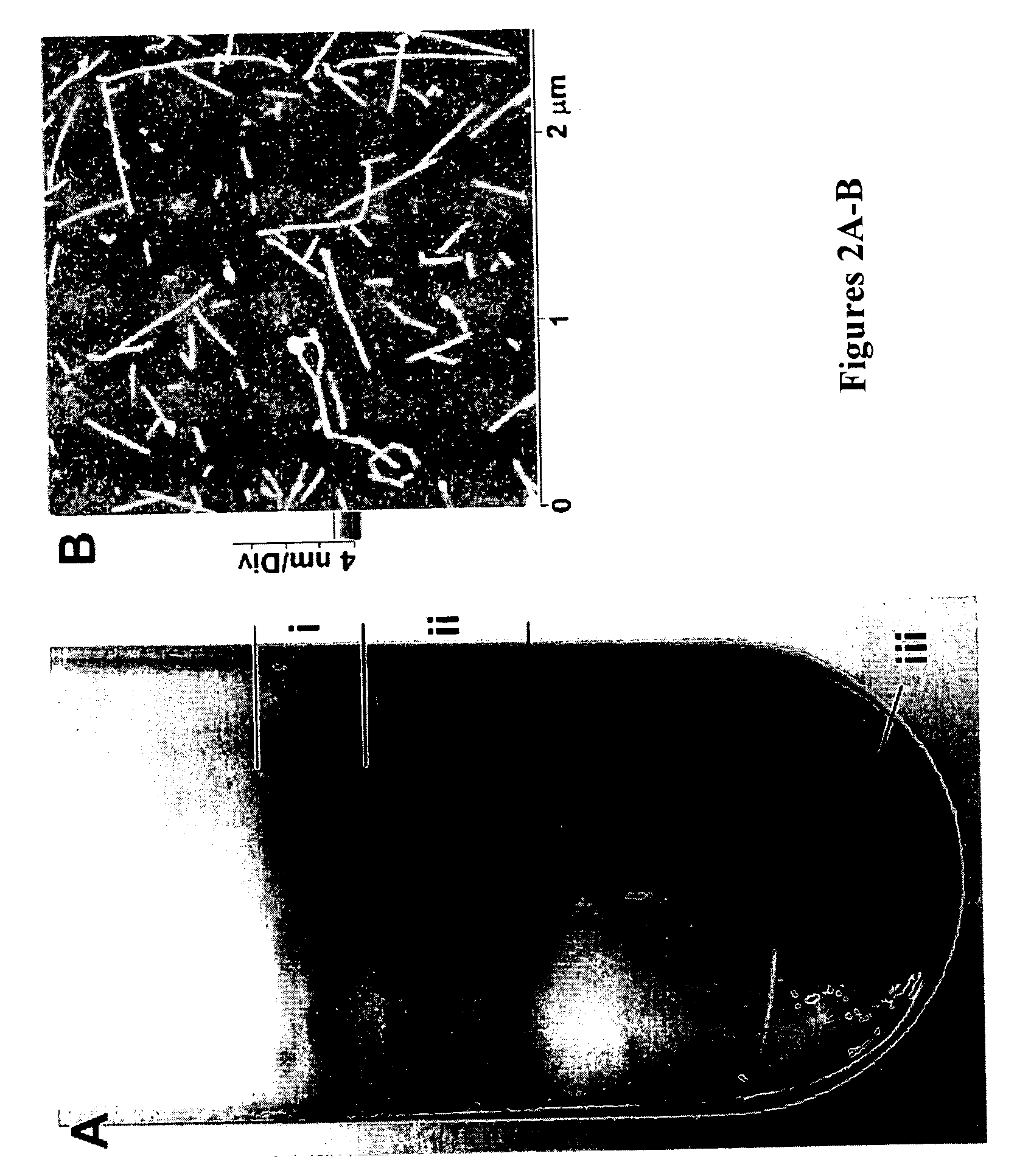Separation of carbon nanotubes in density gradients
a carbon nanotube and density gradient technology, applied in the direction of optical radiation measurement, centrifugal force sediment separation, conductive materials, etc., can solve the problems of compromising the properties and utility of carbon nanotubes, and modifying the nanotubes
- Summary
- Abstract
- Description
- Claims
- Application Information
AI Technical Summary
Benefits of technology
Problems solved by technology
Method used
Image
Examples
example 1
[0058]Isolation of SWNTs. In a modification of a known literature method, 1 mg of raw SWNTs was dispersed in aqueous solutions of 0.1 M NaCl and 1 mg mL−1 single-stranded DNA. (See, also Zheng; M., Jagota, A.; Strano, M. S; Santos, A. P.; Barone, P.; Chou, S. G., Diner, B. A; Dresselhaus, M. S.; McLean, R. S.; Onoa, G. B; Samsonidze, G. G.; Semke, E. D.; Usrey, M.; Walls, D. J. Science 2003, 302, 1545-1548, incorporated herein by reference in its entirety.) Raw SWNTs produced by the HiPCO and CoMoCAT methods were purchased from Carbon Nanotechnologies, Inc. and Southwest Nanotechnologies, Inc., respectively. Single-stranded DNA (GT)20 purified by standard desalting was purchased from Alpha DNA (Ontario, Canada). Aggregations and bundles of SWNTs were disrupted using a bath ultrasonicator (Model 3510, Branson) or a horn ultrasonicator coupled to a tapered extension, which was immersed into solution (Sonic Dismembrator 550, Fisher Scientific). Bath and horn ultrasonication times range...
example 2
[0059]Diffusion of density gradients. After the layering the different iodixanol (FIG. 6) dilutions, the centrifuge tubes were tilted to ˜85 degrees for 60 minutes to enable an approximately linear gradient to form via diffusion.
example 3
[0060]Fractionation of density gradients. After ultracentrifugation, the gradients were fractionated by an upward displacement technique using a modified Beckman fraction recovery system. (J. M. Graham, Biological centrifugation (BIOS Scientific Publishers, Limited, ebrary, Inc., 2001), pp. 210) Fluorinert FC-40 (p˜1.85 g mL−1, Sigma-Aldrich, Inc.) was used as a water-immiscible displacement medium, which was introduced to the bottom of the centrifuge tube by a motor controlled syringe pump (PHD 2000, Harvard Apparatus, Inc.) at a speed of 0.5 mL min−1 through a 22-gauge stainless-steel tube in steps of 25 or 100 μL. To measure the density profile of a density gradient, 100 μL fractions were collected, and the density of each fraction was measured within an error ±1% by massing a known volume of each fraction using a calibrated micro-pipette and an electronic balance. To measure the optical absorbance spectra of SWNTs in a density gradient as a function of position in the gradient, ...
PUM
| Property | Measurement | Unit |
|---|---|---|
| densities | aaaaa | aaaaa |
| pH | aaaaa | aaaaa |
| length | aaaaa | aaaaa |
Abstract
Description
Claims
Application Information
 Login to View More
Login to View More - R&D
- Intellectual Property
- Life Sciences
- Materials
- Tech Scout
- Unparalleled Data Quality
- Higher Quality Content
- 60% Fewer Hallucinations
Browse by: Latest US Patents, China's latest patents, Technical Efficacy Thesaurus, Application Domain, Technology Topic, Popular Technical Reports.
© 2025 PatSnap. All rights reserved.Legal|Privacy policy|Modern Slavery Act Transparency Statement|Sitemap|About US| Contact US: help@patsnap.com



